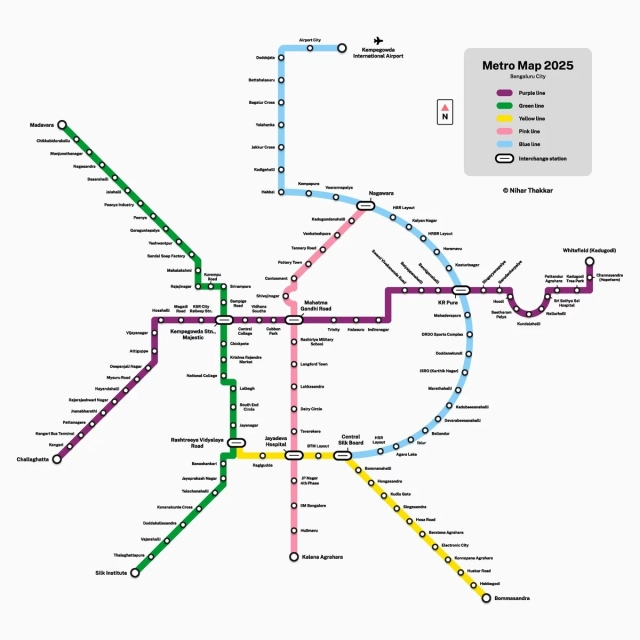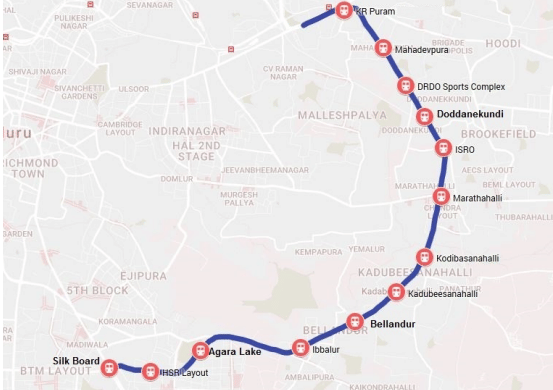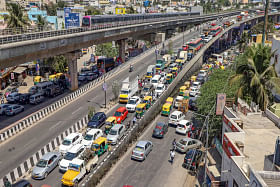The Outer Ring Road (ORR), known for housing Bengaluru’s tech hubs, experienced an unusual traffic bottleneck on 27 September, which proved to be so severe that it left commuters, including tech professionals and students, stranded on the road for more than four hours.
By approximately 5 pm, the ORR section from Marathahalli to Silk Board Junction was completely clogged, and this traffic standstill soon extended to other major routes, including Sarjapur Road, Old Madras Road, Ballari Road, Tumakuru Road, and Mysuru Road.
For the subsequent couple of hours, motorists found themselves immobilised in this gridlock. More details on the traffic situation from yesterday can be found here.
The traffic situation was so dire that several school students did not reach home until late in the evening, hours after leaving their schools in the afternoon.
The traffic congestion also disrupted the plans of fans of Emmy-winning US comedian Trevor Noah who was scheduled to perform at Manpho Convention Centre in Manyata Tech Park at 7.30 pm.
(His show was eventually cancelled due to inadequate acoustics. People who were able to attend expressed their frustration at the poor event organization and recounted the difficulties they encountered in reaching the venue due to the traffic conditions).
Bengaluru’s Outer Ring Road – Most Congested Road In The City
Constructed in phases between 1996 and 2002, Bengaluru’s Outer Ring Road (ORR) forms a 60-kilometre circuit, originally intended to link major highways, enhance travel efficiency, and alleviate congestion.
The project was undertaken by the Bangalore Development Authority (BDA) with the goal of redirecting heavy vehicle traffic, including trucks, away from the city centre.
However, the proliferation of tech parks and residential complexes on both sides of the ORR has introduced new challenges.
It is now one of the busiest corridors in India’s IT capital, hosting major IT parks housing prominent companies like Intel, AOL, Cisco, Adobe, and Walmart. Alongside these tech giants, numerous residential complexes and apartments have emerged, making the ORR the city’s most congested road.
It also serves as a crucial link connecting traffic between Kempegowda International Airport (KIA) and the major IT hubs at Electronics City and Whitefield.
According to a report from the Outer Ring Road Companies Association (ORRCA) submitted to the traffic police, an astounding 6.4 lakh employees commute daily between Silk Board and KR Puram, using 3.3 lakh vehicles, including personal cars and cabs.
This high volume of daily movement significantly contributes to the persistent congestion on the road.
BJP Lok Sabha MPs Tejasvi Surya and PC Mohan proposed on Twitter that the massive traffic jams on the Outer Ring Road on Wednesday could have been avoided, or at least made less severe, by operationalising the KR Puram – Baiyappanahalli stretch on the purple line of the metro.

Will That Stretch Bring Relief To ORR?
The Baiyappanahalli-KR Pura metro link, despite having received CMRS approval, remains unopened.
The Bangalore Metro Rail Corporation Limited (BMRCL) recently announced the clearance from the Commissioner of Metro Railway Safety (CMRS) for the 2.1-km Baiyappanahalli-KR Pura stretch, which includes a new station at Benniganahalli (Tin Factory).

This seemingly short stretch is of paramount importance to the Purple Line as it connects the tech hub of Whitefield with the CBD and the rest of the city. It is currently covered through feeder buses that further adds to the road traffic.
The 13.7-km KR Pura-Whitefield line is operational; it however remains isolated from the rest of the metro network.
The safety inspection of the Baiyappanahalli-KR Pura section was conducted on 20 September, by AM Chowdhary, the CMRS for the Southern Circle, after a delay from its initial inspection date on 13 September, 2023.
However, there is still no fixed date for the opening of this much-awaited stretch, as the government hopes to open the Kengeri-Challaghatta section alongside it, further contributing to delays.
According to a Bangalore Mirror report, metro commuters have urged the BMRCL to commence operations on the KR Puram-Baiyappanahalli section, as it would greatly benefit passengers traveling beyond Baiyappanahalli and not wait until the Kengeri-Challaghatta section receives approval.
In the long term though, the potential solution to help alleviate traffic congestion on the ORR is the construction of the blue line, which includes the 19-km Metro line between KR Puram and Central Silk Board.

The 19 km elevated stretch, known as Phase 2-A, will feature 13 stations, including Central Silk Board, HSR layout, Agara, Ibbalur, Bellandur, Kadubeesanahalli, Kodibeesanahalli, Marathahalli, ISRO, Doddanekundi, DRDO sports complex, Saraswathi Nagar, and K R Puram.
The BMRCL initially set timelines for opening this line in 2025. However, given the new state government’s record on public works, that deadline runs the risk of being extended.
From the side of the commuter though, it means that there is no relief from traffic snarls in the ORR in the short term.


